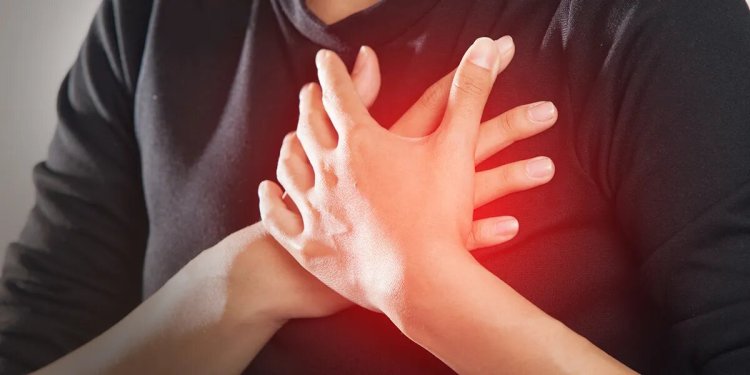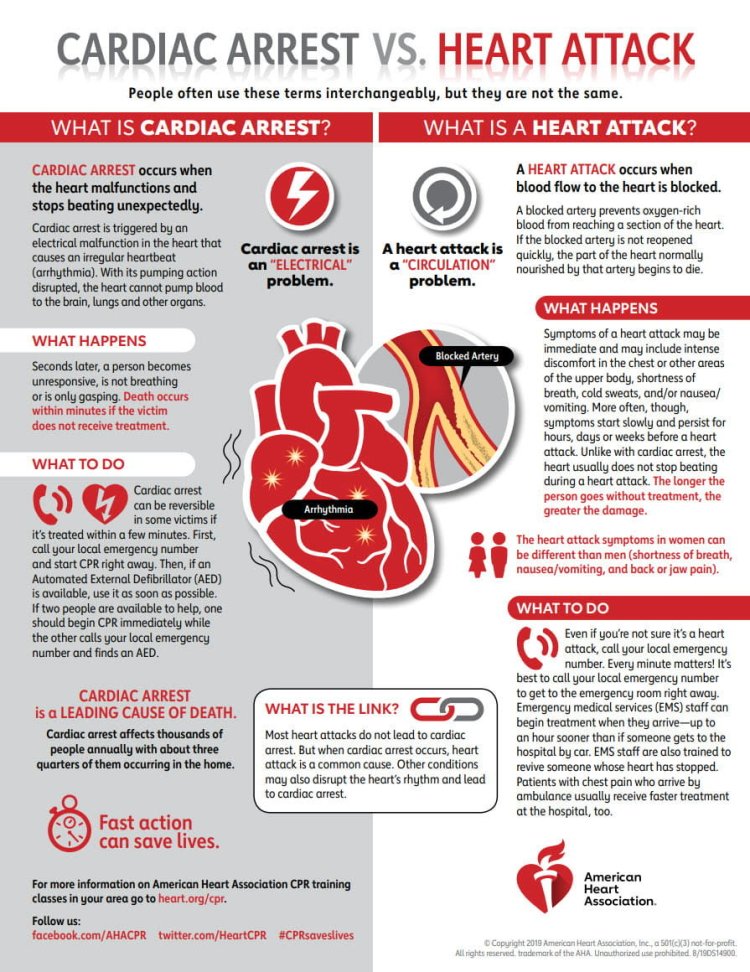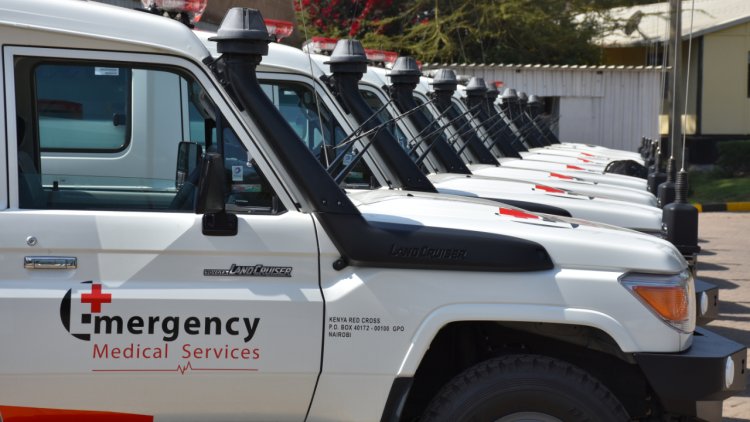How A Cardiac Arrest Compares To A Heart Attack
The two terms were used interchangeably by Kenyans during their conversations...

The sudden death of former Education Cabinet Secretary (CS) George Magoha brought to the limelight coronary heart diseases such as cardiac arrest and heart attack.
According to the World Health Organisation (WHO), coronary heart disease deaths in Kenya are responsible for 4.54 per cent of total deaths.
The two terms were thus used interchangeably by Kenyans during their conversations in the wake of Magoha's demise, but according to a poster shared by TV47 news anchor and reporter Flora Limukii, those terms are different entirely.
Viral Tea takes a look at the differences between a cardiac arrest and a heart attack
Heart Attack
According to the American Heart Association, a heart attack occurs when a blocked artery prevents oxygen-rich blood from reaching a section of the heart.

An infographic showing the differences between a heart attack and cardiac arrest. /AMERICAN HEART ASSOCIATION/TWITTER.FLORA LIMUKII
If the blocked artery is not reopened quickly, the part of the heart normally nourished by that artery begins to die. The longer a person goes without treatment, the greater the damage.
Symptoms of a heart attack may be immediate and intense or start slowly with mild symptoms. It’s important to note that it’s also possible to have mild symptoms or even no symptoms at all and still have a heart attack.
Unlike with sudden cardiac arrest, the heart usually doesn’t stop beating during a heart attack. The heart attack symptoms in women can be different than in men.
Cardiac Arrest
Sudden cardiac arrest is when the heart malfunctions and suddenly stops beating. As compared to a heart attack which is a “circulation” problem, a sudden cardiac arrest is an “electrical” problem.
Sudden cardiac arrest occurs suddenly and often without warning. It happens when an electrical malfunction in the heart causes an irregular heartbeat (arrhythmia).
With its pumping action disrupted, the heart can't pump blood to the brain, lungs and other organs.
When this occurs, a person loses consciousness and has no pulse. Death occurs within minutes if the victim doesn't receive treatment.
What's the link?
These two distinct heart conditions are linked. Sudden cardiac arrest can occur after a heart attack, or during recovery, but heart attacks increase the risk of sudden cardiac arrest.
Many heart attacks don't immediately lead to sudden cardiac arrest, but when sudden cardiac arrest occurs, a heart attack is a common cause.
Other heart conditions may also disrupt the heart’s rhythm and lead to sudden cardiac arrest. These include a thickened heart muscle (cardiomyopathy), heart failure, arrhythmias, particularly ventricular fibrillation, and long Q-T syndrome.
"I actually found it quite disturbing when I heard the narration of the sequence of events leading to Prof George Magoha’s death for I wondered why an ambulance wasn’t called immediately instead of calling his friend Prof Mwanda at KNH who even had to go back for a BP machine," Dr Ahmed Kalebi, a renowned consultant pathologist, questioned.
"I don’t think it was an issue of access to ambulance services because surely Prof Magoha must’ve had a very comprehensive medical cover and was even being rushed to Nairobi Hospital. Methinks it was probably a momentary lack of awareness to call for an emergency ambulance."
First Aid in Case of a Heart Attack
Call emergency medical help if you think you might be having a heart attack. Someone having a heart attack may have any or all of the following:
- Chest pain, pressure or tightness, or a squeezing or aching sensation in the centre of the chest
- Pain or discomfort that spreads to the shoulder, arm, back, neck, jaw, teeth or occasionally upper abdomen
- Nausea, indigestion, heartburn or abdominal pain
- Shortness of breath
- Lightheadedness, dizziness, fainting
- Sweating
According to Mayo Clinic, a heart attack generally causes chest pain for more than 15 minutes. Some people have mild chest pain, while others have more severe pain.
The discomfort is commonly described as pressure or chest heaviness, although some people have no chest pain or pressure at all. Women tend to have more-vague symptoms, such as nausea or back or jaw pain.
Some heart attacks strike suddenly, but many people have warning signs hours or days in advance.
What to do if you or someone else may be having a heart attack
- Call 911 or your local emergency number. Don't ignore the symptoms of a heart attack. If you can't get an ambulance or emergency vehicle to come to you, have a neighbour or a friend drive you to the nearest hospital. Drive yourself only if you have no other option. Because your condition can worsen, driving yourself puts you and others at risk.
- Chew and swallow an aspirin while waiting for emergency help. Aspirin helps keep your blood from clotting. When taken during a heart attack, it could reduce heart damage. Don't take aspirin if you are allergic to it or have been told by your health care provider never to take aspirin.
- Take nitroglycerin, if prescribed. If you think you're having a heart attack and your healthcare provider has previously prescribed nitroglycerin for you, take it as directed while waiting for emergency medical help.
- Begin CPR if the person is unconscious. If the person isn't breathing or you don't find a pulse, begin CPR to keep blood flowing after you call for emergency medical help. Push hard and fast on the centre of the person's chest in a fairly rapid rhythm; about 100 to 120 compressions a minute.
- If an automated external defibrillator (AED) is immediately available and the person is unconscious, follow the device instructions for using it.
Emergency Treatment of Cardiac Arrest
Do you suspect someone is experiencing cardiac arrest? The signs are:
- Sudden loss of responsiveness – The person doesn’t respond, even if you tap them hard on the shoulders or ask loudly if they're OK. The person doesn’t move, speak, blink or otherwise react.
- No normal breathing – The person isn’t breathing or is only gasping for air.
If you think the person may be suffering cardiac arrest and you're a trained lay rescuer:
- Ensure scene safety.
- Check for a response.
- Shout for help. Tell someone nearby to call 911 or your emergency response number. Ask that person or another bystander to bring you an AED (automated external defibrillator), if there’s one on hand. Tell them to hurry – time is critical. If you’re alone with an adult who has signs of cardiac arrest, call 911 and get an AED (if one is available).
- Check for no breathing or only gasping. If the person isn’t breathing or is only gasping, begin CPR with compressions.
- Begin high quality CPR. Push down at least two inches in the center of the chest at a rate of 100 to 120 pushes a minute. Allow the chest to come back up to its normal position after each push.
- Use an AED. As soon as it arrives, turn it on and follow the prompts.
- Continue CPR. Administer it until the person starts to breathe or move, or until someone with more advanced training, such as an Emergency Medical Services (EMS) team member, takes over.

A fleet of ambulances in Kenya. /EPLUS MEDICAL SERVICES

 admin
admin 




